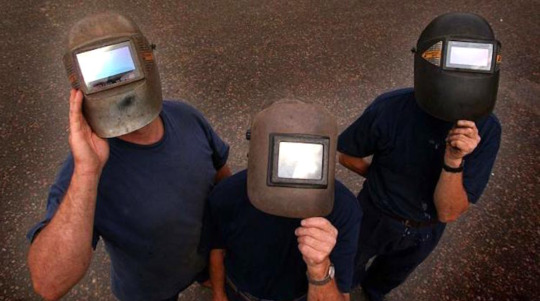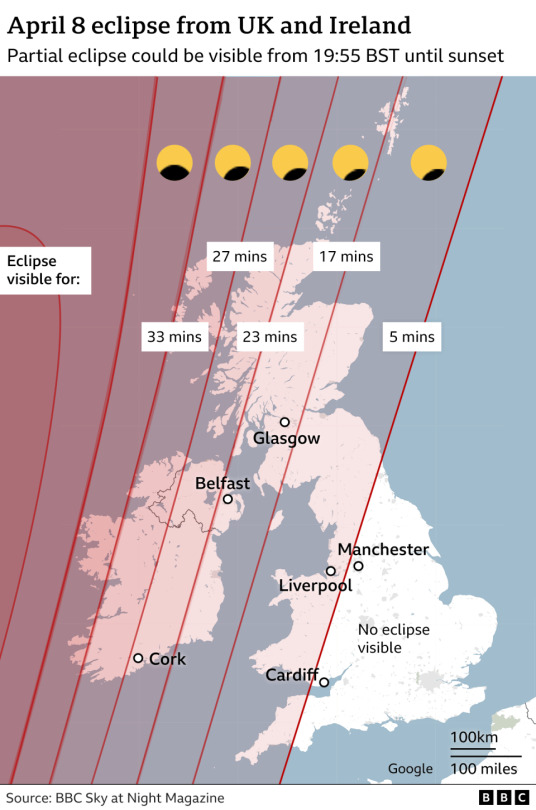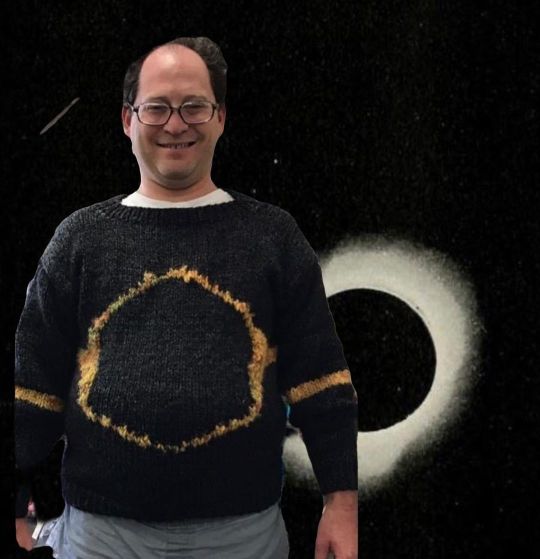#eclipse2017
Explore tagged Tumblr posts
Photo

Deep Corona by DJMcCrady https://flic.kr/p/WTbYmH
24 notes
·
View notes
Text
I was working for the last eclipse we could see in Ohio. I didn't have glasses but I managed to get a selfie through the trees. I'll be at work again for tomorrow's eclipse. My boss gave us all eclipse glasses. I thought he knew it was during work hours but he bought a pack and had extras. Thought it was going to be after work. I'll be in the north of Columbus just south of the totality line seeing what I can see from the work parking lot. The news keeps warning us to have gas and snacks in the car anticipating a traffic jam. #throwback #eclipse2017 #eclipse2024
instagram
0 notes
Text
Si te quedaste sin gafas para ver el eclipse, encuentra 3 formas sencillas de verlo
El astrónomo Homer Dávila te explica cómo resolver de forma rápida el problema que has de estar experimentando al no poder contar con gafas solares para ver el eclipse. Mira el vídeo a continuación El método de los vidrios de soldadura con DIN #12 inclusive es aceptado y recomendado por la NASA. Véase: https://eclipse2017.nasa.gov/safety

View On WordPress
0 notes
Text
DON'T USE GENERAL WELDING GOGGLES ON AN ECLIPSE!
I hate that the only way to rebut @jeanjauthor is to give it more visibility, & Tumblr can show a reply separated from dangerous crap.
The American Astronomical Society says that welding filters shade 12 might be too bright, 13 or 14 is decent ... but 13 and 14 are rare in stores *because very few welding jobs are that bright, so almost all googles out there are not that protective*. So using almost all welding goggles risks eye damage. Retinas don't have pain receptors so it's easy to damage your eyes. Sources, & one has more sources:
https://eclipse.aas.org/eye-safety
https://phillips-safety.com/welding-safety/can-i-use-welding-glasses-to-look-at-the-sun/
"Unbelievably" cold is silly, or you'd get frost every sunset. At most maybe a 15 °F drop starting about an hour before, returning to almost normal maybe an hour after. If it's cloudy or humid, less. Example:
https://eclipse2017.nasa.gov/temperature-change-during-totality
Re: the April 8 eclipse: OK, this is worth knowing
When I was looking at the path of the eclipse’s totality the other day, I underestimated how far the zone of partial eclipse might reach across the Atlantic, even though the shadow of totality proper had already lifted away from the planet’s surface.
So if you’re in the UK or Ireland, you’ll be able to see a little of it before sunset (weather permitting, of course). The usual warnings: do NOT attempt to look at this without eclipse glasses or other similar eye protection.
Here’s a diagram showing where and how long the partial eclipse can be seen. (The full article is here, courtesy of Yahoo.) …Not so much a wolf eating the Sun, as one taking a little bite of it and then the Sun hurriedly saying UM, NO THANKS and then setting.

467 notes
·
View notes
Photo

112.) My eclipse sweater. Made it to wear during the solar eclipse on 8/21/17. Hope to wear it during the 2024 eclipse and to travel to a location with the full eclipse as well and have T-shirts of it available by then. #sambarsky #sambarskysweaters #sambarskyknitter #knit #knitting #knitter #art #artist #sweater #intarsia #handknit #eclipse #solareclipse #eclipse2017 #solareclipse2017 #sun #moon #sky #lunareclipse #moon #solar #lunar #totaleclipse https://www.instagram.com/p/CrKSjkzN1ZA/?igshid=NGJjMDIxMWI=
#sambarsky#sambarskysweaters#sambarskyknitter#knit#knitting#knitter#art#artist#sweater#intarsia#handknit#eclipse#solareclipse#eclipse2017#solareclipse2017#sun#moon#sky#lunareclipse#solar#lunar#totaleclipse
16 notes
·
View notes
Photo

Eye in the sky by irockutah
3 notes
·
View notes
Text

#space#earth#stars#sky#eclipse2017#total eclipse#solar eclipse#lunar eclipse#eclipse#moon#sun#outer space#nasa#amazing
379 notes
·
View notes
Video
tumblr
Flying during a Solar Eclipse (X)
Νεφέλη, look at this beauty!
#solar eclipse#eclipse#space#sky#eclipse2017#just to be clear this is a 2 year old video it's not from this one but it;s still amazing
84K notes
·
View notes
Video
tumblr
Here’s the best view of Solar Eclipse. Amazing! via : Fiorella Ikeue
#eclipse#eclipse 2017#hyperlapse#total#total solar eclipse#solar#sun#eclipse2017#timelapse#time#lapse#universe#nature#art#amazing#wonderfull#video of the day#video#space#earth#galaxy#system#planet#moon#investigation#astronomy#science
56K notes
·
View notes
Text
Everything You Need to Know About the Aug. 21 Eclipse
On Aug. 21, all of North America will experience a solar eclipse.

If skies are clear, eclipse-watchers will be able to see a partial solar eclipse over several hours, and some people – within the narrow path of totality – will see a total solar eclipse for a few moments.
How to Watch
It’s never safe to look at the Sun, and an eclipse is no exception. During a partial eclipse (or on any regular day) you must use special solar filters or an indirect viewing method to watch the Sun.

If you have solar viewing glasses, check to make sure they’re safe and undamaged before using them to look at the Sun. Make sure you put them on before looking up at the Sun, and look away before removing them. Eclipse glasses can be used over your regular eyeglasses, but they should never be used when looking through telescopes, binoculars, camera viewfinders, or any other optical device.
If you don’t have eclipse glasses, you can still watch the eclipse indirectly! You can make a pinhole projector out of a box, or use any other object with tiny holes – like a piece of cardstock with a hole, or your outstretched, interlaced fingers – to project an image of the partially eclipsed Sun onto the ground.

Of course, if it’s cloudy (or you’d just rather stay inside), you can watch the whole thing online with us at nasa.gov/eclipselive. Tune in starting at noon ET.
If you’re in the path of totality, there will be a few brief moments when it is safe to look directly at the eclipse. Only once the Moon has completely covered the Sun and there is no light shining through is it safe to look at the eclipse. Make sure you put your eclipse glasses back on or return to indirect viewing before the first flash of sunlight appears around the Moon’s edge.

Why do eclipses happen?
A solar eclipse happens when the Moon passes directly between the Sun and Earth, casting its shadow down on Earth’s surface. The path of totality – where the Moon completely covers the Sun – is traced out by the Moon’s inner shadow, the umbra. People within the Moon’s outer shadow, the penumbra, can see a partial eclipse.

The Moon’s orbit around Earth is tilted by about five degrees, meaning that its shadow usually doesn’t fall on Earth. Only when the Moon lines up exactly between the Sun and Earth do we see an eclipse.

Though the Sun is about 400 times wider than the Moon, it is also about 400 times farther away, making their apparent sizes match up almost exactly. This is what allows the Moon to block out the Sun’s bright face, while revealing the comparatively faint, pearly-white corona.
The Science of Eclipses
Eclipses are a beautiful sight to see, and they’re also helpful for our scientists, so we’re funding eleven ground-based science investigations to learn more about the Sun and Earth.

Total solar eclipses reveal the innermost regions of the Sun’s atmosphere, the corona. Though it’s thought to house the processes that kick-start much of the space weather that can influence Earth, as well as heating the whole corona to extraordinarily high temperatures, we can’t study this region at any other time. This is because coronagraphs – the instruments we use to study the Sun’s atmosphere by creating artificial eclipses – must cover up much of the corona, as well as the Sun’s face in order to produce clear images.

Eclipses also give us the chance to study Earth’s atmosphere under uncommon conditions: the sudden loss of solar radiation from within the Moon’s shadow. We’ll be studying the responses of both Earth’s ionosphere – the region of charged particles in the upper atmosphere – and the lower atmosphere.
Learn all about the Aug. 21 eclipse at eclipse2017.nasa.gov, and follow @NASASun on Twitter and NASA Sun Science on Facebook for more. Watch the eclipse through the eyes of NASA at nasa.gov/eclipselive starting at 12 PM ET on Aug. 21.
Make sure to follow us on Tumblr for your regular dose of space: http://nasa.tumblr.com
14K notes
·
View notes
Photo

a bit late but here's the moon and the sun being in love and stuff 🌒
twitter / ig / prints
11K notes
·
View notes
Photo

Can you believe it's already been a year since we seen the solar eclipse? I cannot put into words how enchanting the eclipse was. We were truly blessed to have this privilege to join our friends, family, and strangers for a brief period of harmony. The joy, excitement, and togetherness we expressed on that day was inspiring, a bright spot in the darkness of all the events that had occurred in the weeks prior. As the moon slowly hovered over the brilliant sun, I watched as darkness fell over the mountains and cascaded across the lake before it washed over us. The horizon was aflame with the same colors as sunset; orange, yellow, pink, and gold. The blue sky was blotted out by the stillness of night. The silence that followed was eerie. Birds stopped singing. Cicadas began to sing their evening songs. The entire place was still until totality began. It was a powerful reminder that nature will always hold complete dominion over humanity. All we can hope to do is watch the skies and try to understand our universe and the heavens above. The moment the sun and moon joined together for those fleeting 2 minutes and 38 seconds, you could feel this deep connection between yourself and the cosmos. You weren't just an individual, an island in the vast sea of humanity. You were a denizen of the universe, floating together as one in an ocean of stars. #solareclipse #eclipse2017 #oneyearanniversary #totality #beautiful #nature #blackholesun #cosmos #sky #tennessee
#solareclipse#eclipse2017#oneyearanniversary#totality#beautiful#nature#blackholesun#cosmos#sky#tennessee
3 notes
·
View notes
Photo

112.) My eclipse sweater. Made it to wear during the solar eclipse on 8/21/17. Hope to wear it during the 2024 eclipse and to have T-shirts of it available by then. #sambarsky #sambarskysweaters #sambarskyknitter #knit #knitting #knitter #art #artist #sweater #intarsia #handknit #eclipse #solareclipse #eclipse2017 #solareclipse2017 #sun #moon #sky #august212017 #8212017 #lunareclipse #moon #moonelcipse #lunar (at Arbutus Branch Library) https://www.instagram.com/p/CVRmYOatsu7/?utm_medium=tumblr
#sambarsky#sambarskysweaters#sambarskyknitter#knit#knitting#knitter#art#artist#sweater#intarsia#handknit#eclipse#solareclipse#eclipse2017#solareclipse2017#sun#moon#sky#august212017#8212017#lunareclipse#moonelcipse#lunar
3 notes
·
View notes
Photo

Every intern at NASA is emo confirmed
#nasa#eclipse#eclipse2017#lindsay stirling#pink floyd#loona#lion king broadway#frank sinatra#owl city#the beatles#twenty one pilots#twenty øne piløts#hair broadway#sammy hagar#panic! at the disco#panic! at the brendon#brendon urie#brendon patd#tyler joseph#josh dun#celtic women#coldplay#simon and garfunkel#carmen cusack#bonnie tyler#disney#all time low#alex gaskarth#jack barakat#zachary merrick
5K notes
·
View notes


